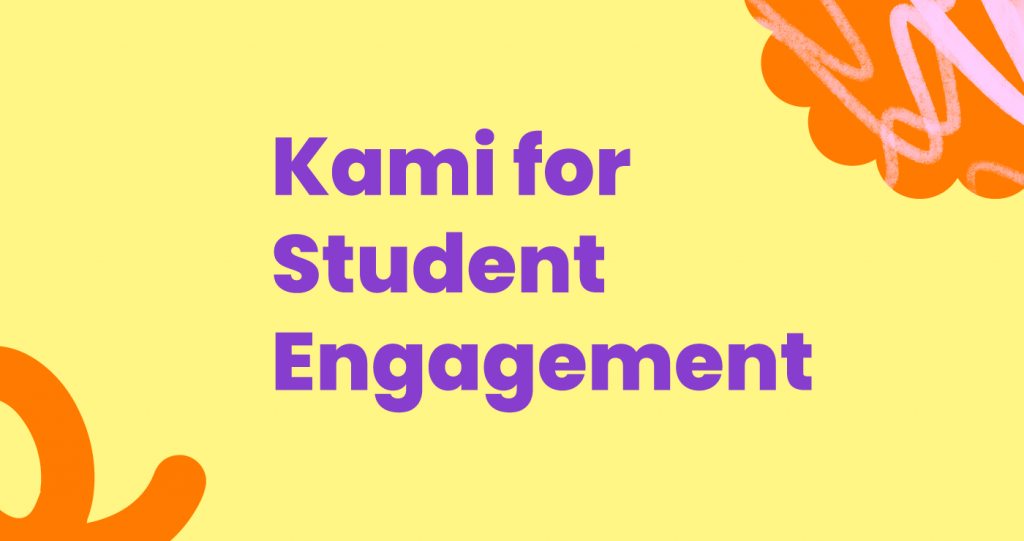Do you ever see a glazed look in your students’ eyes? Heads in hands or slumped over desks? It’s easy to spot when learners aren’t fully engaged, and keeping students’ attention through a whole class can be tricky. Everyone has a different attention span. Understanding attention spans is an integral part of classroom management. It’s important to use the best engagement strategies available to you to increase student engagement.
What is a student engagement strategy?
Teaching strategies to increase student motivation to learn, otherwise known as student engagement strategies have proven to improve learning experiences and boost academic success.
What are the three essential elements of student engagement?
Student engagement is more than just stopping learners from falling asleep in class! Student engagement is when students arrive to class motivated to learn, participate in the lesson, and demonstrate a positive attitude.
There are three types of student engagement:
- Behavioral — Learners behave well and don’t misbehave. They have everything they need during class, and demonstrate active learning by active listening, working diligently, and participating in class discussions.
- Emotional — Learners feel like they’re a part of the school community and are happy to be there! They will likely greet you with a smile, interact positively with their classmates and look alert during your lessons.
- Cognitive — Also known as intellectual engagement, students are eager to learn and think deeply about the subject. They demonstrate critical thinking and ask open-ended questions. They also often exceed expectations when completing assignments.
What are some student engagement strategies?
When reviewing the below student engagement strategies please focus on the ones which you think will benefit your learners by piquing student interests, improving the learning process for learners, and helping them achieve their learning goals.
1. Classroom management strategies
In a busy classroom, distractions draw your students’ attention away from your lesson and impact their learning.
Classroom management strategies help you build a structured learning environment where students are encouraged to be their best selves in the classroom.
here are a few student motivation strategies to get you started:
- Create classroom rules that set expectations. Increase student interest by deciding on shared student-centered classroom values together.
- Establish standards for your classroom community. Students are more likely to stay engaged and share their opinions when they know how their classmates will respond. Shut down dismissive or demeaning language to create a safe learning environment. Our blog on anti-bullying techniques has some very helpful examples.
2. Active learning
Sitting still for a whole lesson can be a bit much for some of your students. Active learning techniques encourage learners to work with their classmates to discuss a problem, solve an issue or drill down on a new concept.
- Some popular active learning activities include:
- Three-step interview — Make groups of three and conduct a 5 to 10-minute interview, the interviewee will quiz the other learner on the lesson while someone else records the conversation.
- Play debate — Inspire debate. When learners understand there’s more than one opinion on a topic they’re more likely to develop intellectual curiosity and engage with the topic.
3. Include all learners
If just a few students are participating the most, the rest of your students probably aren’t staying engaged with the lesson. Here are some ideas to keep all learners engaged and accountable:
- Lottery answers — Write every learner’s name down on a piece of paper and pop it in a spare mug. When you need answers from the class, just pull out a name and ask that learner to answer.
- Think-pair-share — The think-pair-share technique challenges students to think about the answer to a question on their own, pair up with a classmate to discuss, then share their conclusions with the class.
- Whip around — Pose a question, then go around the room and ask every student to contribute. Encourage student learning by challenging them to rephrase it in a different way to boost understanding for the entire class.
4. Culturally diverse teaching
When students see themselves reflected in lessons and teaching materials, they’re more likely to be engaged and empowered to share their perspectives.
- Broaden the cultural perspective of the class — A study by the Economics of Education Review showed students often achieve more when they share the same ethnicity as their teacher. Bringing in diverse guest speakers can bring context and engagement for students who share a cultural background.
- Diversify your learning materials — What voices are speaking in your classroom? Work to find teaching materials about and by under-represented groups to show your whole class the value of diversity.
When students understand your classroom is a place for everyone, they’re more likely to speak up, get involved and participate in the learning process.
5. Cooperative learning
Cooperative learning involves delivering instruction through small group work. The best part of cooperative learning is that it builds strong relationships in the classroom and works across different subjects and grade levels.
Cooperative learning prioritizes:
- Interdependence — Students learn that each group member’s efforts are important for success which is a great lesson for the real world outside the classroom.
- Interaction — Students offer encouragement and positive feedback to other group members such as thumbs up.
- Accountability — Every student accepts responsibility for fulfilling their role.
- Social skills — Students develop interpersonal skills that help them work together effectively.
- Group Processing — Students work together for project-based learning. You can also use online learning to break them into smaller groups.
6. Project-based learning
Studies have found that project-based learning helps create a learning environment where students are engaged and excited about learning.
The question should:
- Be an open-ended question
- Apply students’ readily learned skills
- Encourage students to develop their own approaches to problem-solving.
Instead of following teacher-directed instruction, students develop critical thinking and interdisciplinary skills to keep them intellectually engaged in their learning.
7. Take a break
Brain breaks are quick exercises or activities that give students a way to channel some of the extra energy they’ve stored up. In the middle of your class, pause for a few moments to do something fun and unexpected!
Here are a few of our favorite brain-break ideas:
- Sing a quick song
- Do a one-minute drawing about the lesson
- Start a freeze dance party — play some music and bust a move, but challenge students to freeze in place when you pause the tunes
8. Gamification
What if you could challenge your students to be more engaged? According to a 2011 study, gamification in the classroom is correlated with increased student motivation and engagement. Gamification involves setting learning and behavior goals, then creating a points system where students can work their way towards the goal and earn a reward. Gamification also helps students set SMART goals.
It doesn’t have to be complicated, you could award points for the following criteria:
- Attendance
- Good behavior
- Kindness
- Academic achievement
9. Interdisciplinary learning
Learners work across different subjects and with colleagues to create assignments and develop critical thinking.
These could include:
- Presenting students with a news story and a related question to solve
- Asking learners to write a letter from the perspective of a historical figure
10. Don’t waste time
You might be downloading out a worksheet, or getting a presentation set up, this can be dead time. Stay on task and fill these blank spaces with activities to hold students’ attention. For example:
- What I know — If you’re just about to dive into new content, ask students to identify three things they already know about the subject and jot them down as bullet points.
- Think Pair Share — Students reflect on something, discuss it with a partner, and then share it with the rest of the class.
- Quickwrite — Write down three questions or points that have been raised by the lesson so far.
Final thoughts
Lucky for you, there are lots of simple techniques you can start using today to encourage every student to get involved in your lessons! Use the theories and techniques we’ve shared to increase student engagement and create the best learning experience.








